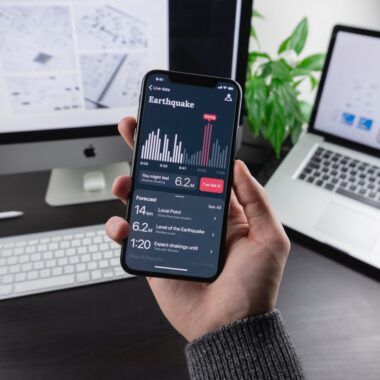Developing Linux Applications for Advanced Surround View Camera Systems

The automotive industry has witnessed a remarkable transformation in recent years, moving far beyond basic backup cameras to embrace fully integrated surround view systems. These advanced solutions utilize multiple high-resolution cameras strategically positioned around the vehicle, working in concert to create a seamless, bird’s-eye view of the surrounding environment. This technological advancement has not only revolutionized parking assistance but has also become instrumental in supporting advanced driver assistance systems (ADAS) and autonomous driving capabilities.
Leopard Imaging’s Pioneering Surround View Technology
At the forefront of this technological revolution stands Leopard Imaging’s advanced surround view camera system, which has set new industry standards for image quality and system integration. Their solution incorporates state-of-the-art camera modules that deliver unprecedented clarity and reliability in diverse lighting conditions. Automotive manufacturers have widely adopted this innovative surround view camera system as their preferred choice for next-generation vehicles, owing to its sophisticated architecture that leverages high-performance image sensors coupled with advanced processing units, enabling real-time image stitching and analysis with remarkable precision.
The integration of Leopard Imaging’s system represents a significant advancement in surround view technology, particularly in its approach to image processing and system synchronization. Their cameras feature advanced HDR (High Dynamic Range) capabilities, ensuring optimal visibility in challenging lighting conditions, from bright sunlight to dim parking structures. The system’s sophisticated calibration algorithms maintain precise alignment between multiple camera feeds, delivering a seamless composite view that enhances driver awareness and safety.
The Foundation of Modern Camera Systems
The selection of Linux as the operating system for developing surround view applications marks a strategic choice that brings numerous advantages to both developers and end-users. Linux’s robust architecture provides the stability and reliability essential for safety-critical automotive applications, while its open-source nature enables unprecedented customization opportunities. The operating system’s extensive driver support and efficient resource management capabilities make it ideal for handling the complex requirements of multi-camera systems.
Linux’s role extends beyond mere system operation, providing a comprehensive development environment that supports rapid prototyping and efficient deployment. The platform’s modular architecture allows developers to optimize system components individually, ensuring peak performance while maintaining system stability. This flexibility proves invaluable when implementing complex image processing pipelines and managing real-time data streams from multiple cameras.
Technical Implementation and Integration
Developing surround view applications on Linux requires a thorough understanding of both hardware integration and software optimization. The system architecture must efficiently handle multiple high-bandwidth video streams while maintaining synchronization between cameras. This involves implementing sophisticated buffering mechanisms and utilizing hardware acceleration capabilities to achieve the required processing performance.
Critical to the success of surround view systems is the implementation of efficient image processing pipelines. These pipelines must handle tasks such as distortion correction, perspective transformation, and image stitching in real-time. Linux provides developers with access to powerful libraries and frameworks that facilitate these operations, including OpenCV for computer vision tasks and GStreamer for multimedia processing.
Performance Optimization and Real-Time Processing
Achieving optimal performance in surround view systems requires careful attention to system resource management and processing efficiency. Developers must implement sophisticated scheduling algorithms to ensure consistent frame rates and minimal latency across all camera feeds. Linux’s real-time capabilities play a crucial role here, enabling precise timing control and efficient task scheduling.
The system’s image processing pipeline must be optimized to handle high-resolution video streams while maintaining real-time performance. This involves leveraging hardware acceleration capabilities, implementing efficient memory management strategies, and utilizing parallel processing techniques. Linux’s support for various hardware acceleration technologies, including GPU computing and dedicated image processing units, provides developers with the tools needed to achieve these performance goals.
Future Horizons and Emerging Trends
The future of surround view camera systems holds exciting possibilities, with emerging technologies promising even greater capabilities. Integration with artificial intelligence and machine learning algorithms will enable more sophisticated object detection and tracking capabilities, while advances in camera technology will deliver improved image quality and reduced latency. Linux’s adaptability and extensive ecosystem position it perfectly to support these evolving requirements, ensuring that surround view systems can continue to advance and integrate new capabilities as they emerge.
From Concept to Implementation
The journey from concept to fully functional surround view system requires a methodical approach to development and testing. Modern development workflows emphasize iterative development cycles, allowing teams to rapidly prototype and refine system components while maintaining code quality and system reliability. The integration of continuous integration and deployment (CI/CD) practices ensures consistent quality throughout the development process.
Setting Up the Optimal Development Environment
Creating an effective development environment begins with selecting an appropriate Linux distribution optimized for embedded systems development. Popular choices include Yocto Project-based distributions and Ubuntu embedded variants, which provide the necessary tools and libraries while maintaining a minimal footprint. The environment must support real-time processing capabilities and offer comprehensive debugging tools for troubleshooting complex timing and synchronization issues.
Development teams must carefully configure their build systems to support cross-compilation for target hardware platforms. This involves setting up appropriate toolchains and ensuring all dependencies are properly managed. The build system should facilitate rapid development cycles while maintaining strict version control and documentation standards.
Code Architecture and System Design
Successful surround view applications require thoughtful architecture that promotes maintainability and scalability. The system’s core components must be designed with clear interfaces and robust error handling mechanisms. Modular design principles enable independent testing and validation of system components while facilitating future upgrades and modifications.
The application architecture typically follows a pipeline model, with distinct stages for camera input, image processing, and display output. Each stage must be carefully optimized to minimize latency while maintaining system stability. The implementation must account for various operational scenarios, including system startup, camera calibration, and error recovery.
Advanced Image Processing and Calibration
One of the most challenging aspects of developing surround view systems lies in implementing sophisticated image processing algorithms. These algorithms must handle various tasks, from basic image enhancement to complex geometric transformations. The system must maintain precise calibration across multiple cameras while adapting to changing environmental conditions.
Camera calibration represents a critical component of system setup and maintenance. Automated calibration routines must account for both intrinsic camera parameters and extrinsic relationships between multiple cameras. The calibration process must be robust enough to handle manufacturing variations while remaining simple enough for field service and maintenance.
Practical Implementation Challenges
Real-world implementation of surround view systems presents numerous challenges that developers must address. These range from managing system resources effectively to ensuring reliable operation under diverse environmental conditions. Hardware limitations often require creative optimization strategies, particularly in embedded systems with constrained processing capabilities.
Memory management becomes particularly critical when handling multiple high-resolution video streams. Developers must implement efficient buffering strategies while avoiding memory leaks and fragmentation. The system must maintain consistent performance even under heavy load, requiring careful attention to resource allocation and deallocation.
Testing and Validation Strategies
Comprehensive testing strategies are essential for ensuring system reliability and performance. Testing must cover various aspects of system operation, from basic functionality to edge cases and error conditions. Automated testing frameworks help maintain consistent quality while reducing development time and effort.
Field testing plays a crucial role in validating system performance under real-world conditions. Test procedures must verify system operation across different lighting conditions, weather scenarios, and driving situations. Documentation of test results and system behavior helps identify areas for improvement and ensures consistent quality across deployments.
Industry Applications and Success Stories
The practical implementation of surround view systems has led to numerous success stories across various industries. In the automotive sector, these systems have significantly enhanced parking assistance and maneuvering capabilities. Industrial applications have demonstrated improved efficiency in warehouse operations and facility monitoring.
Case studies from actual deployments provide valuable insights into system implementation and optimization. These examples highlight both technical challenges and practical solutions, offering guidance for future developments. The diverse range of applications demonstrates the versatility and adaptability of Linux-based surround view systems.
Best Practices and Future Considerations
Successful development of surround view applications requires adherence to established best practices while remaining adaptable to emerging technologies. Code quality standards, comprehensive documentation, and rigorous testing protocols form the foundation of reliable system development. Regular security audits and updates ensure ongoing system protection against potential vulnerabilities.
Looking ahead, the integration of artificial intelligence and machine learning capabilities promises to enhance system functionality further. Advanced object recognition and tracking capabilities will enable more sophisticated driver assistance features. The continuing evolution of camera technology and processing capabilities will drive ongoing improvements in system performance and capabilities.
